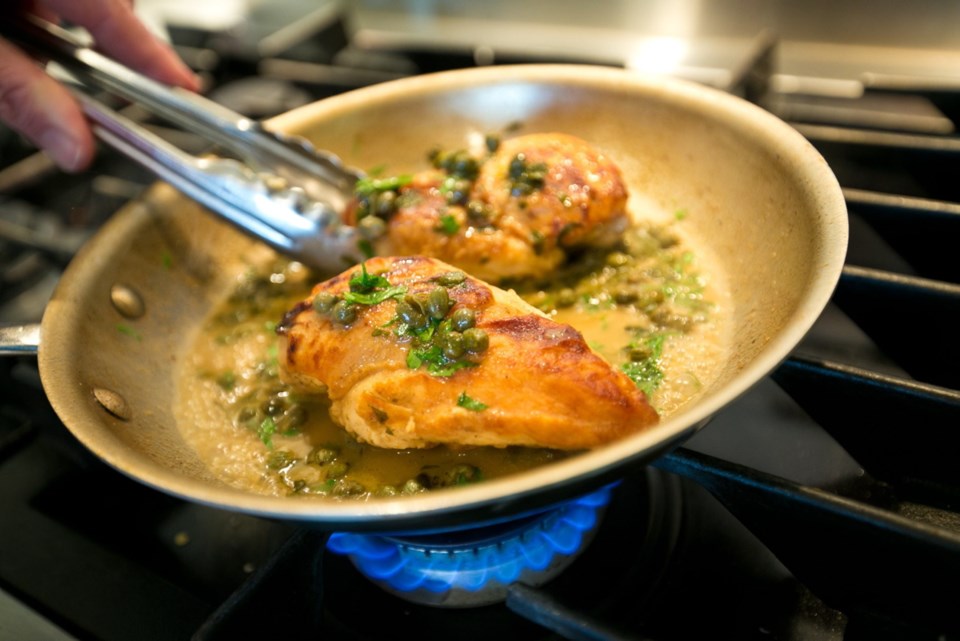 For years, I thought capers were a curious food. I did not know exactly what they were and how we started eating them; I simply knew they could add a lot of flavour to a range of dishes.
For years, I thought capers were a curious food. I did not know exactly what they were and how we started eating them; I simply knew they could add a lot of flavour to a range of dishes.
Are they a seed, a berry or something else, I wondered. Who picked the first one and why are capers pickled?
When I finally did some research, I learned that capers are neither a seed nor a berry but something else: the unopened green flower bud of the caper shrub (Capparis spinosa). The plant also yields berries; more on that in a minute.
The prickly caper shrub is native to Mediterranean regions and grows wild. It’s also cultivated in places such as North Africa, Spain, Italy and France. Roquevaire in Provence is known as the “caper capital.”
I could not find out who first decided capers were good to eat, but I did learn that call was made a long time ago. According to the Visual Food Encyclopedia, they’ve been consumed since antiquity, and Romans used them to flavour fish sauces.
According to the Oxford Companion to Food, like olives, capers are not used fresh. That’s because their characteristic and prized slightly bitter flavour is mainly due to the formation of capric acid, a type of fatty acid that develops during pickling in brine or vinegar.
Capers are graded according to size, from smallest to largest. The smallest, called nonpareille, are marketed as the most delicate, finest type and cost more. But some sources suggest there’s not a huge taste difference between the smallest and largest grade; it’s how they are handled after harvesting that determines quality.
Capers are often called a seasoning or condiment — just a small amount of fairly intense-tasting capers is needed to season a sauce, such as tapenade or remoulade, or accent a vegetable, fish or meat dish, such as pan-fried sole, pasta, veal scaloppini and steak tartare.
In today’s recipes, because smoked salmon and capers pair well together, I’ve combined them in a tasty spread. I’ve also flavoured sautéed chicken breast for two with capers.
As noted, the caper shrub also yields caper berries, a small fruit that is also pickled and eaten as one would an olive. Today, I’ve added them to a salad. They can also be used to garnish cocktails, such as martinis.
Sautéed Chicken Breast with Lemon Caper Sauce
Seared, lean chicken simmered and flavoured with a simple but tasty sauce strewn with capers.
Preparation: five minutes
Cooking time: About 15 minutes
Makes: two servings
3 Tbsp all-purpose flour
2 (7 oz./200 gram) boneless, skinless chicken breasts
• salt and freshly ground black pepper
1 1/2 Tbsp olive oil
1 Tbsp lemon juice
2 Tbsp capers with some juice
1 cup chicken stock or broth
2 Tbsp chopped fresh parsley
Spread the flour on a plate. Season the chicken with salt and pepper, and then coat in the flour.
Heat the oil in a large skillet set over medium to medium-high heat. Shake the excess flour off the chicken and set in the skillet. Cook the chicken five minutes per side, or until golden on the outside and just cooked through. Remove chicken from the skillet and set on a clean plate.
Drain excess oil from the skillet. Now add the lemon juice, capers, stock and parsley to the skillet and bring to a simmer, adjusting the heat as needed to maintain that simmer. Return the chicken to the skillet and simmer, turning once, in the liquid for three to four minutes. Set a piece of chicken on each of two plates, top with sauce and serve.
Smoked Salmon Spread with Capers and Dill
This spread is quickly made in a food processor. It makes a fine snack or appetizer when served with rye bread, crackers or raw vegetables.
Preparation: five minutes
Cooking time: None
Makes: About 1 3/4 cups
1 (1/2 lb./250 g) brick firm cream cheese, at room temperature
3 oz. (85 g) cold salmon, coarsely chopped
2 Tbsp sour cream
2 Tbsp capers
1 Tbsp coarsely chopped fresh dill
1 Tbsp lemon juice
• salt and white pepper to taste
• a few drained capers, for garnish
Place the first six ingredients in a food processor and pulse until well blended.
Taste spread and season with salt and pepper. Transfer to a serving bowl, cover and refrigerate until needed. Spread can be made a day before serving.
When ready to serve, garnish the spread with a few capers.
Butter Lettuce Salad with Blood Oranges, Caper Berries and Goat Cheese
Tender lettuce accented with colourful toppings and a tangy dressing.
Preparation: 20 minutes
Cooking time: none
Makes: four servings
1 1/2 Tbsp blood orange juice
2 tsp Dijon mustard
2 tsp chopped fresh oregano, or pinch or two dried
1/2 tsp honey
1/4 cup extra virgin olive oil
• salt and freshly ground black pepper, to taste
1 head butter lettuce, stems trimmed, head separated into individual leaves
3 small to medium blood oranges, peel and pith removed, flesh halved and sliced (see Note)
32 caper berries (see Note)
100 grams goat cheese, pulled into nuggets
1/2 cup walnut halves
Make dressing by combining juice, mustard, oregano and honey in a small bowl. Slowly whisk in the oil; season with salt and pepper.
Divide and arrange the lettuce on four salad plates. Artfully top with the oranges, caper berries, goat cheese and nuts. Drizzle salads with the dressing and serve.
Note: If blood oranges are not available, you could use navel oranges. Caper berries are sold at European-style food stores and in the deli department of many supermarkets.
Eric Akis is the author of The Great Rotisserie Chicken Cookbook. His columns appear in the Life section on Wednesday and Sunday.



